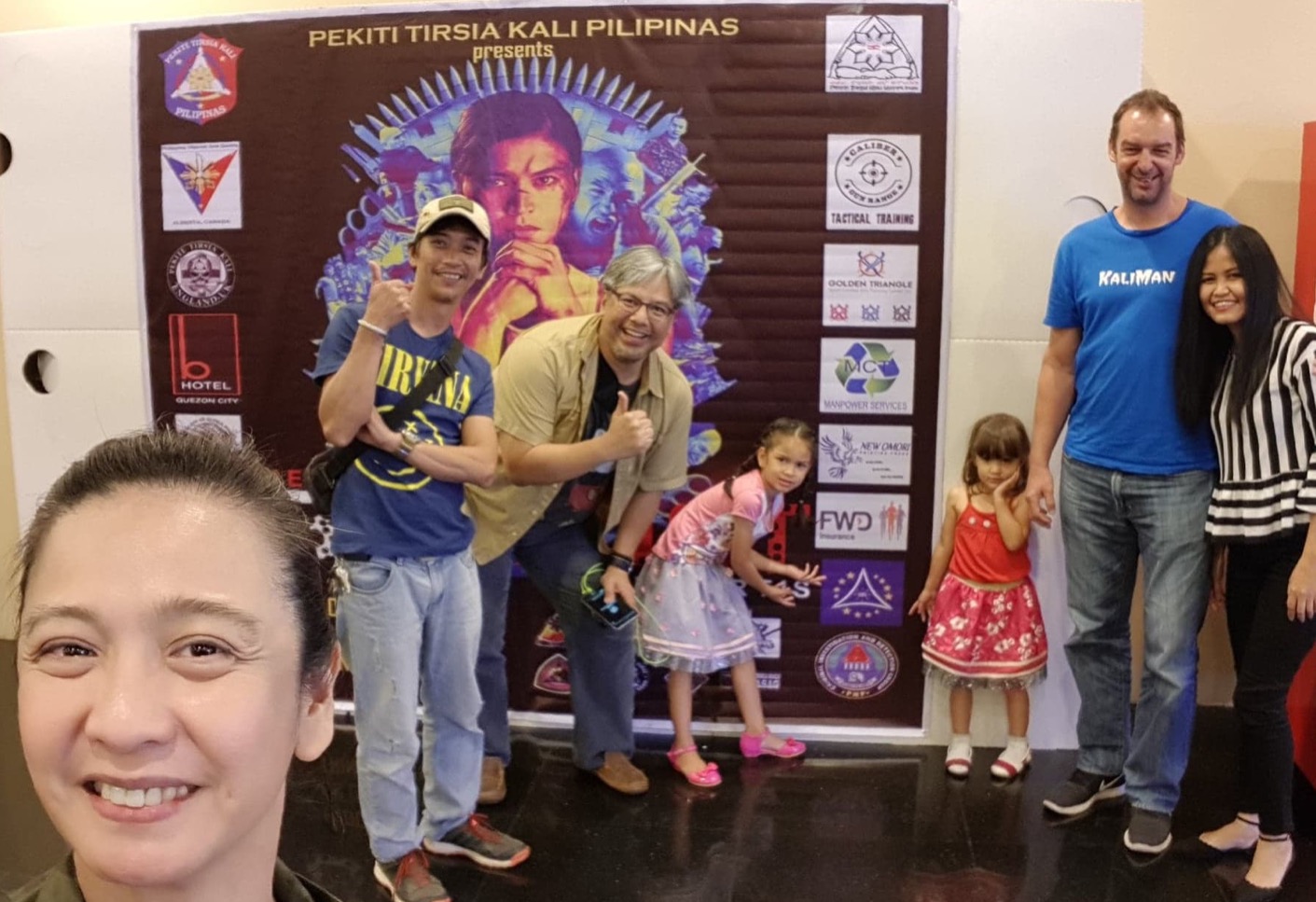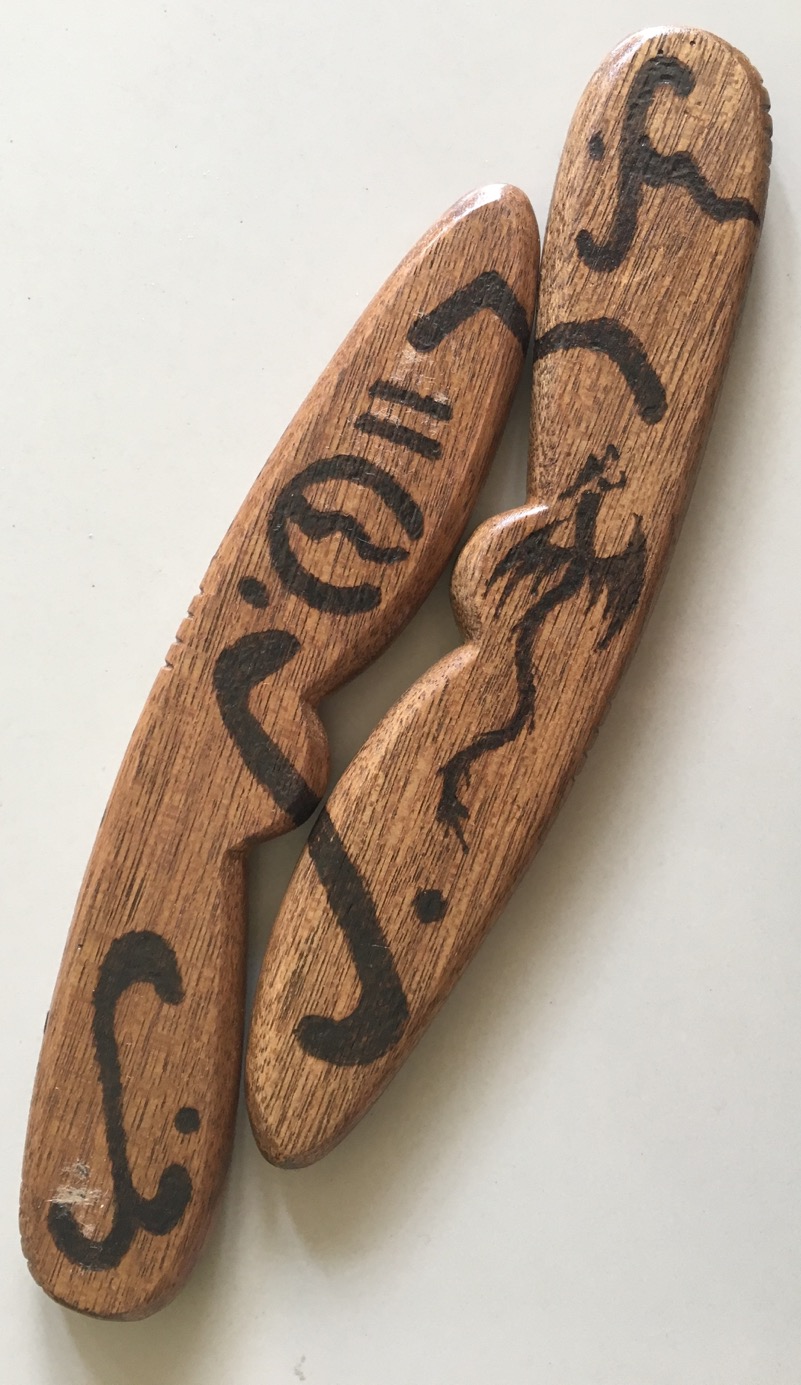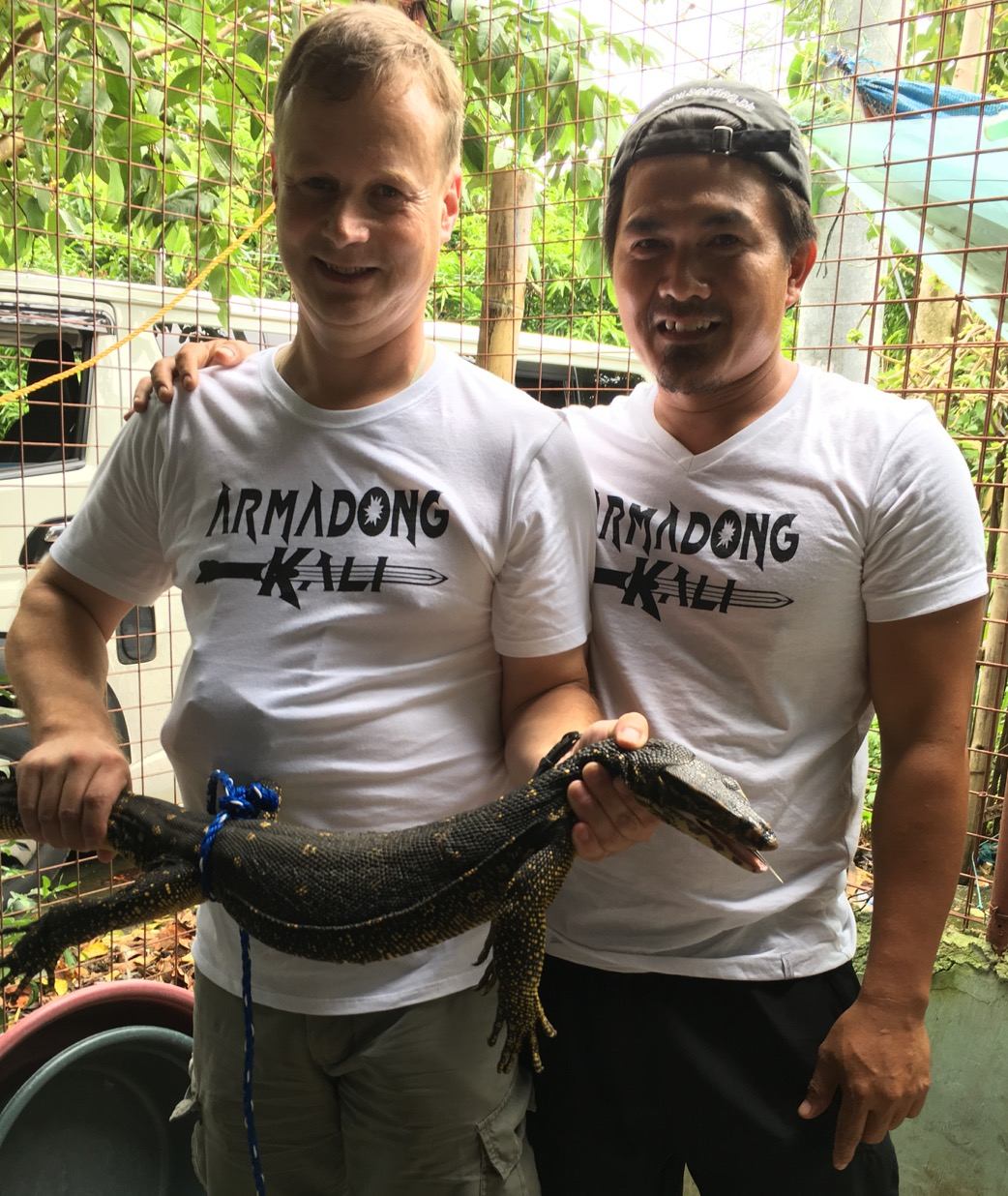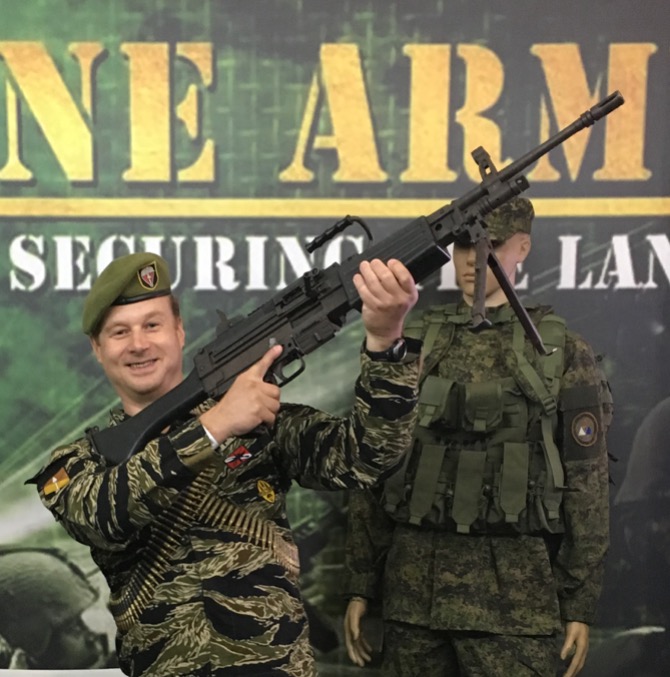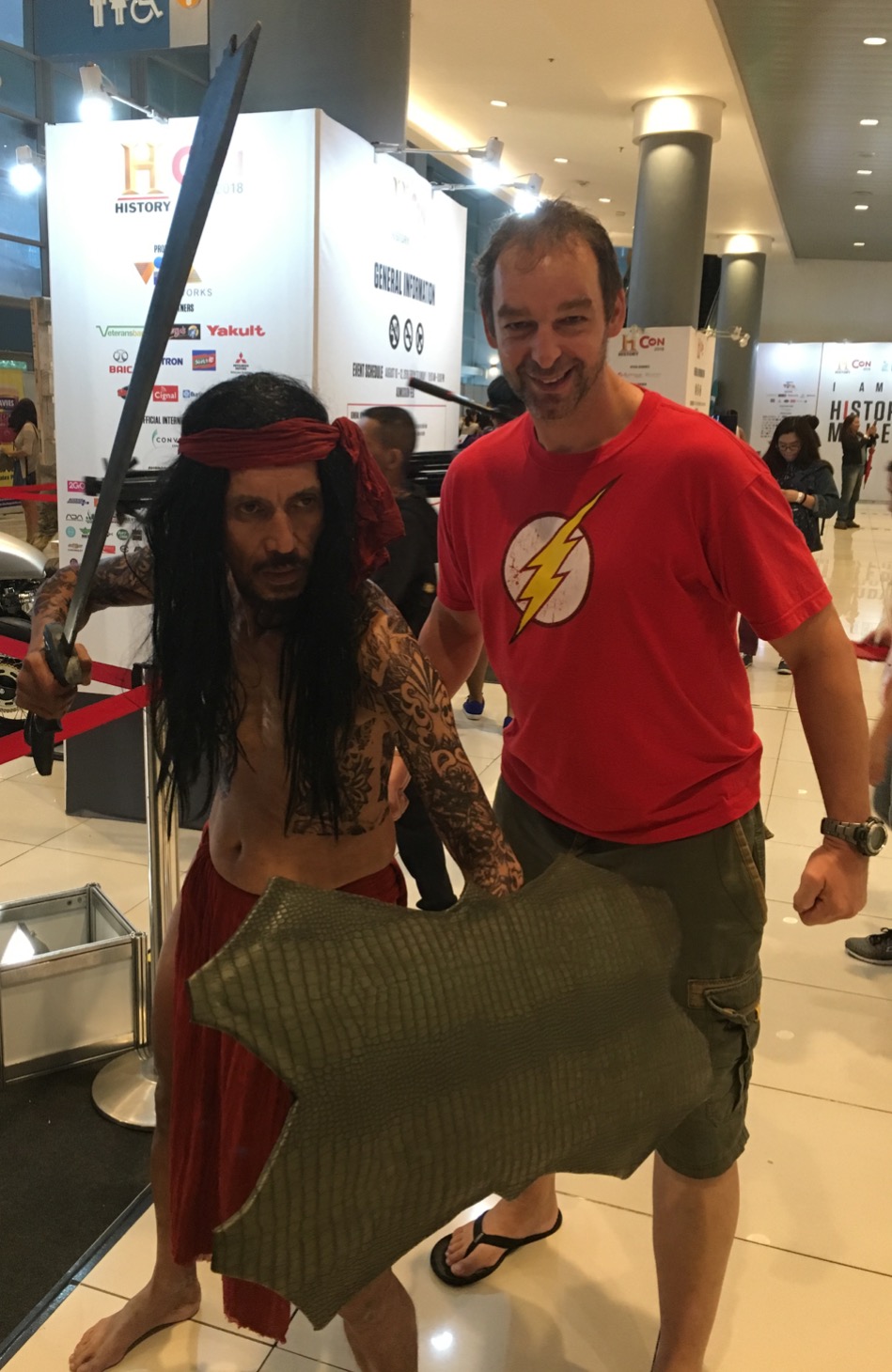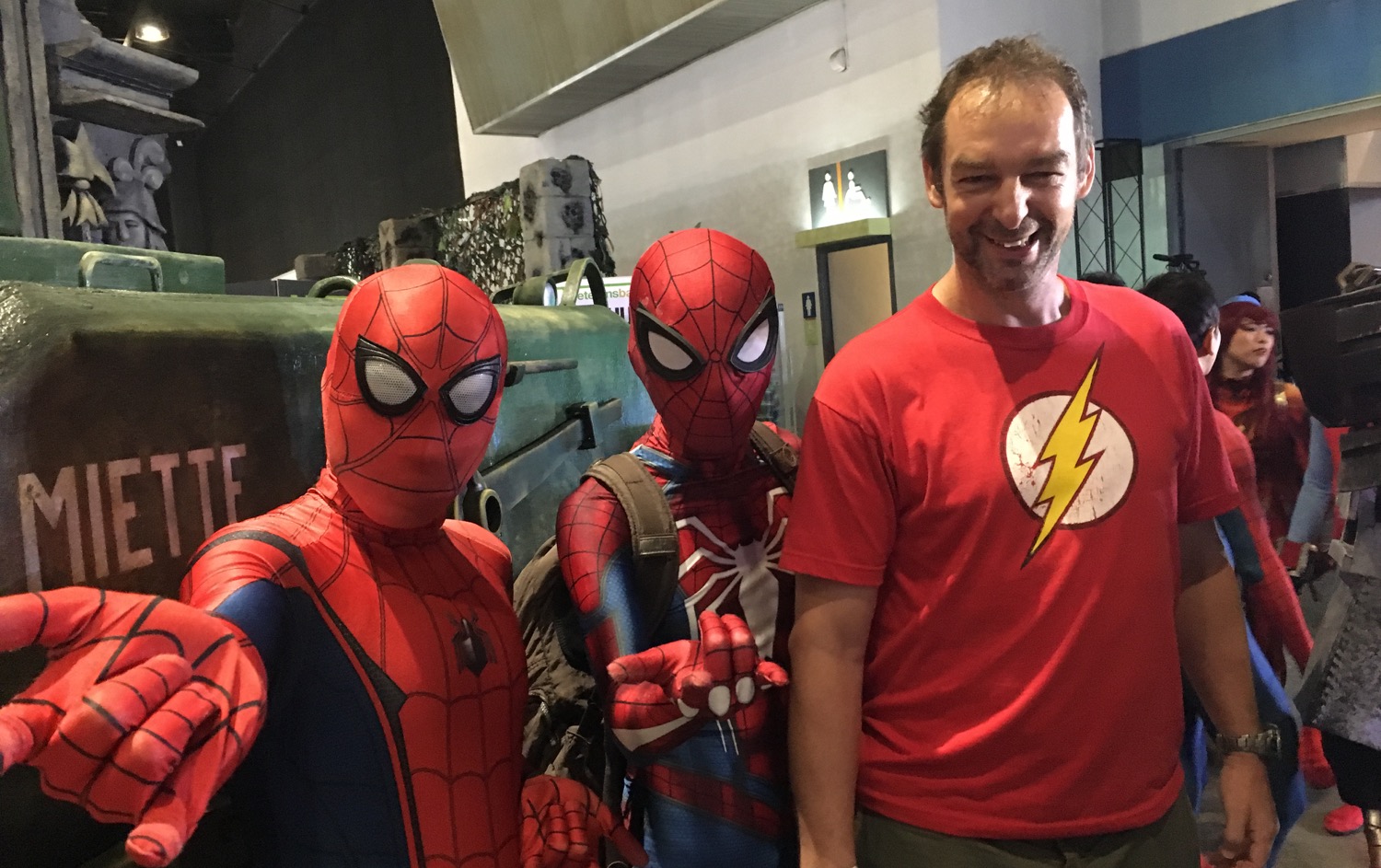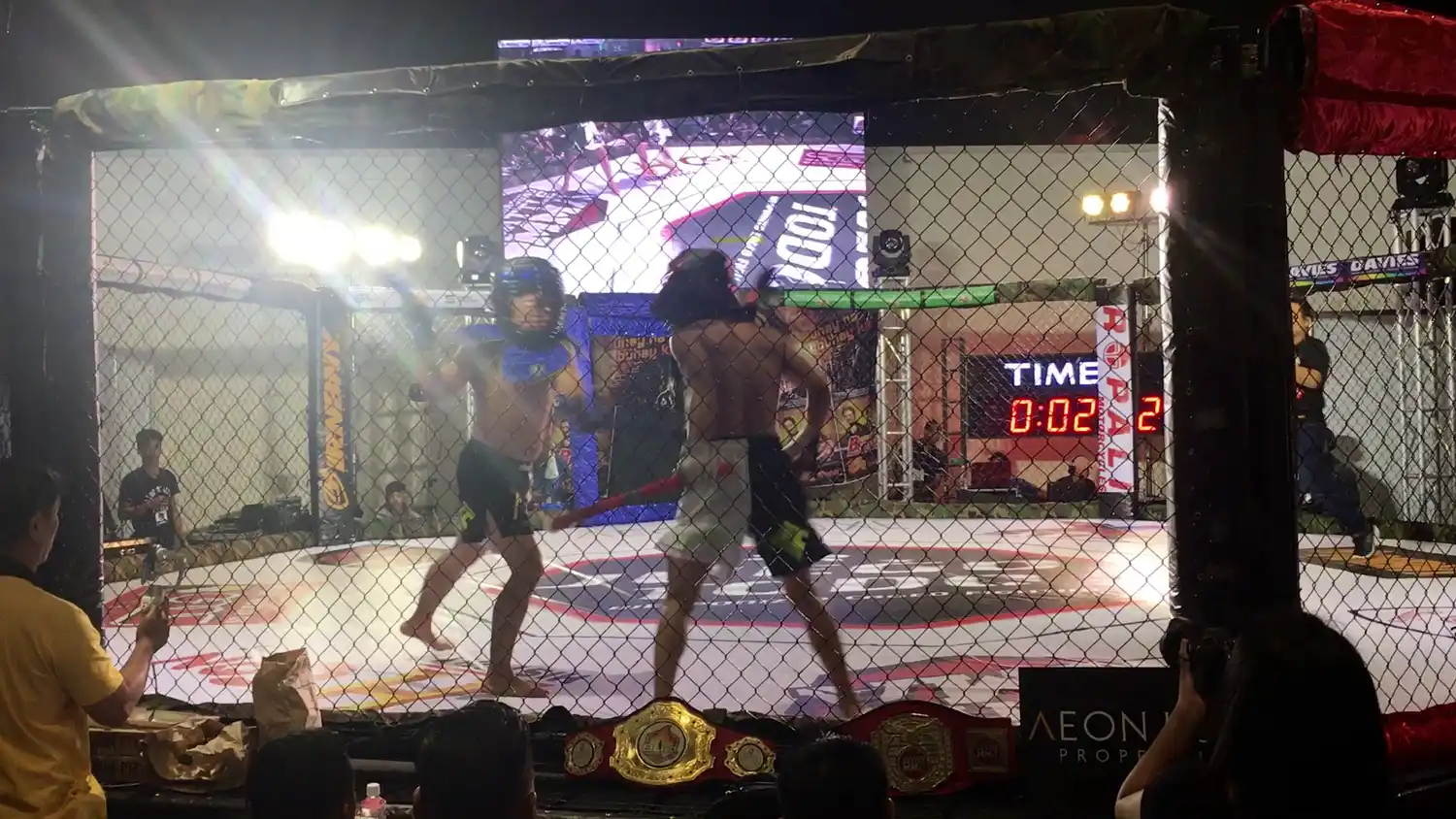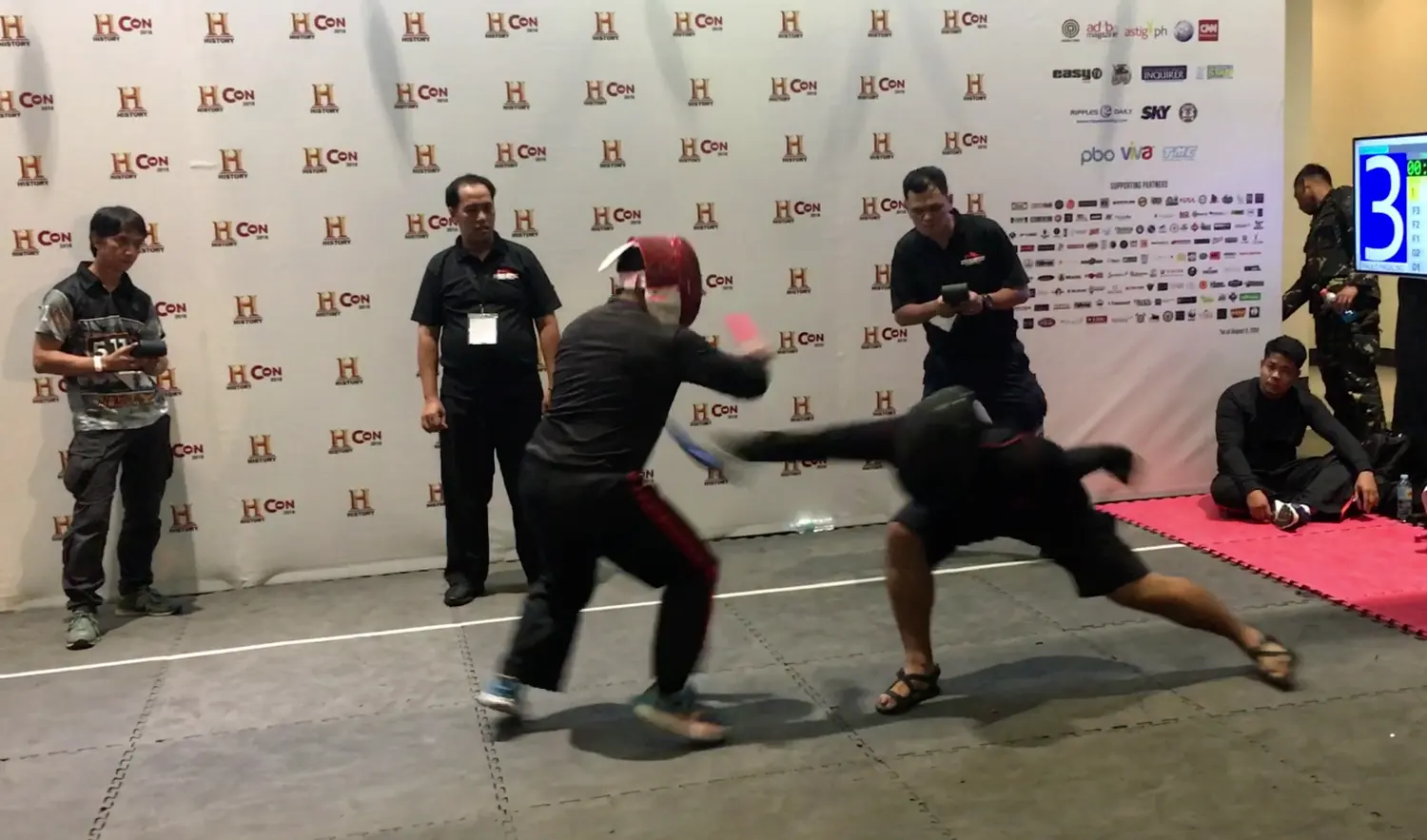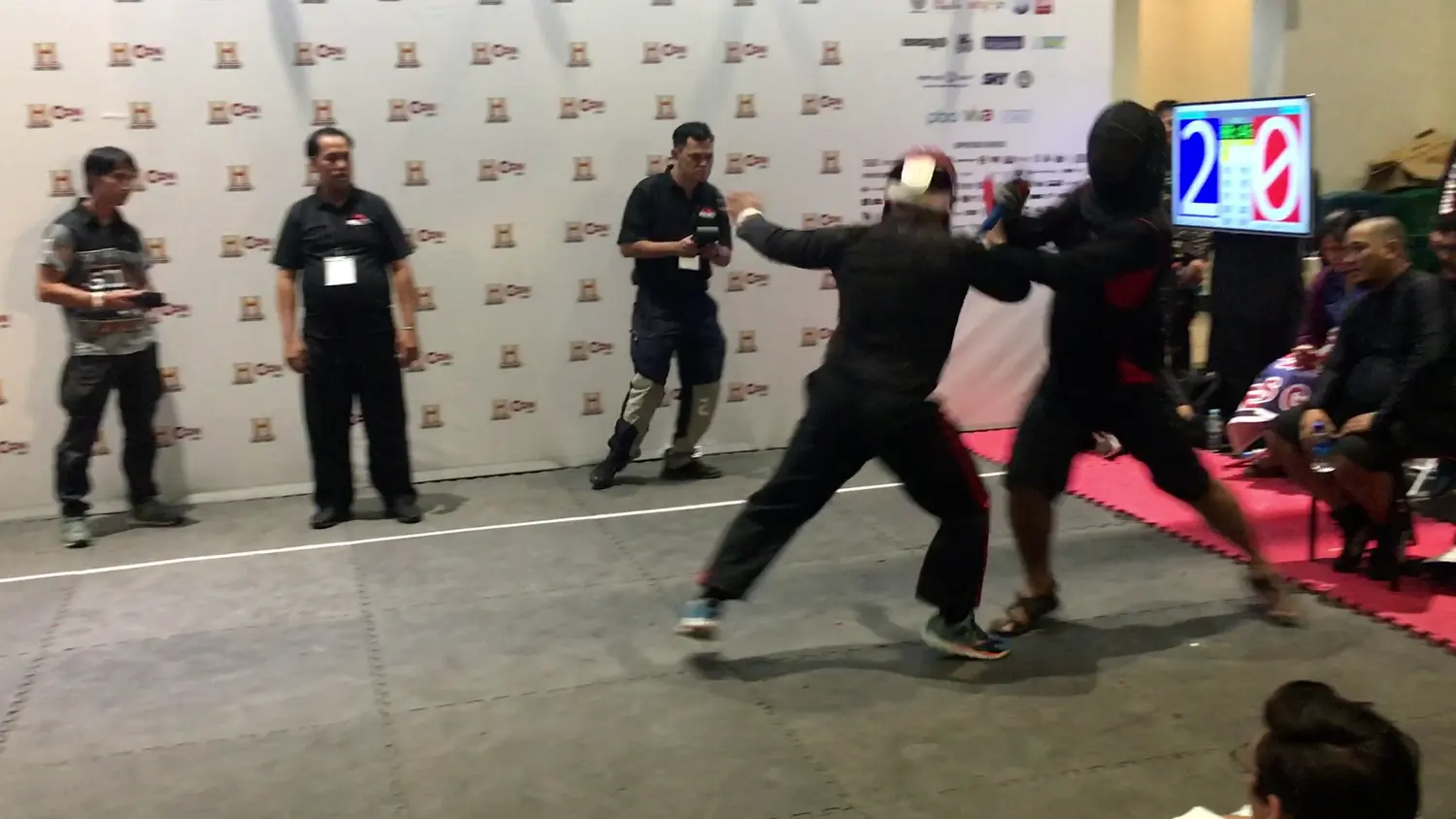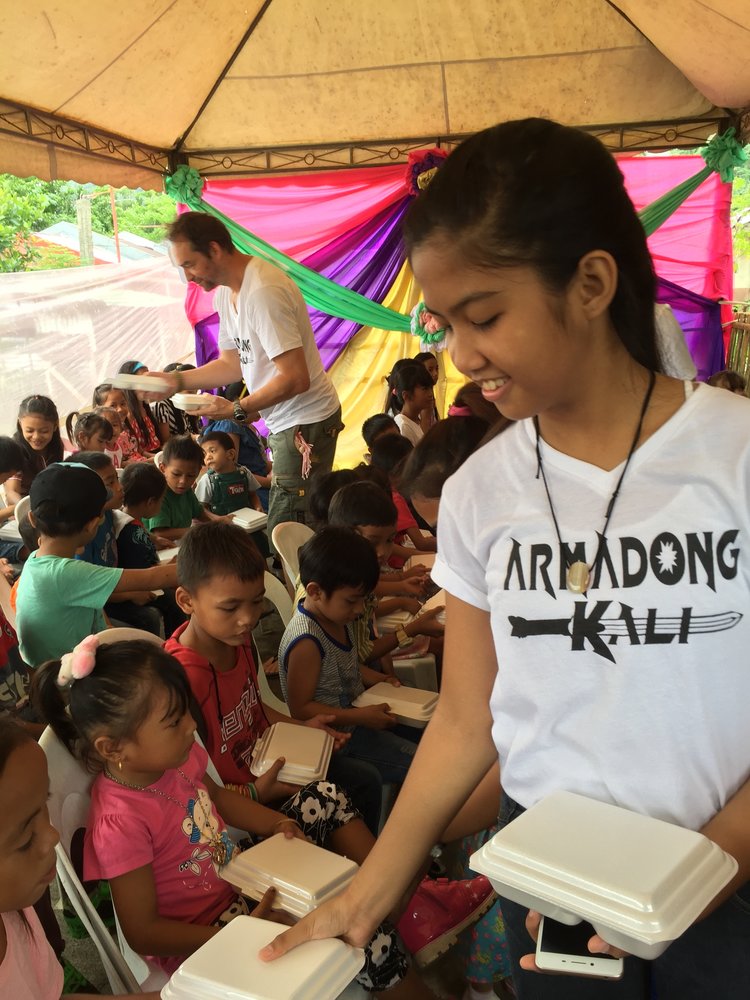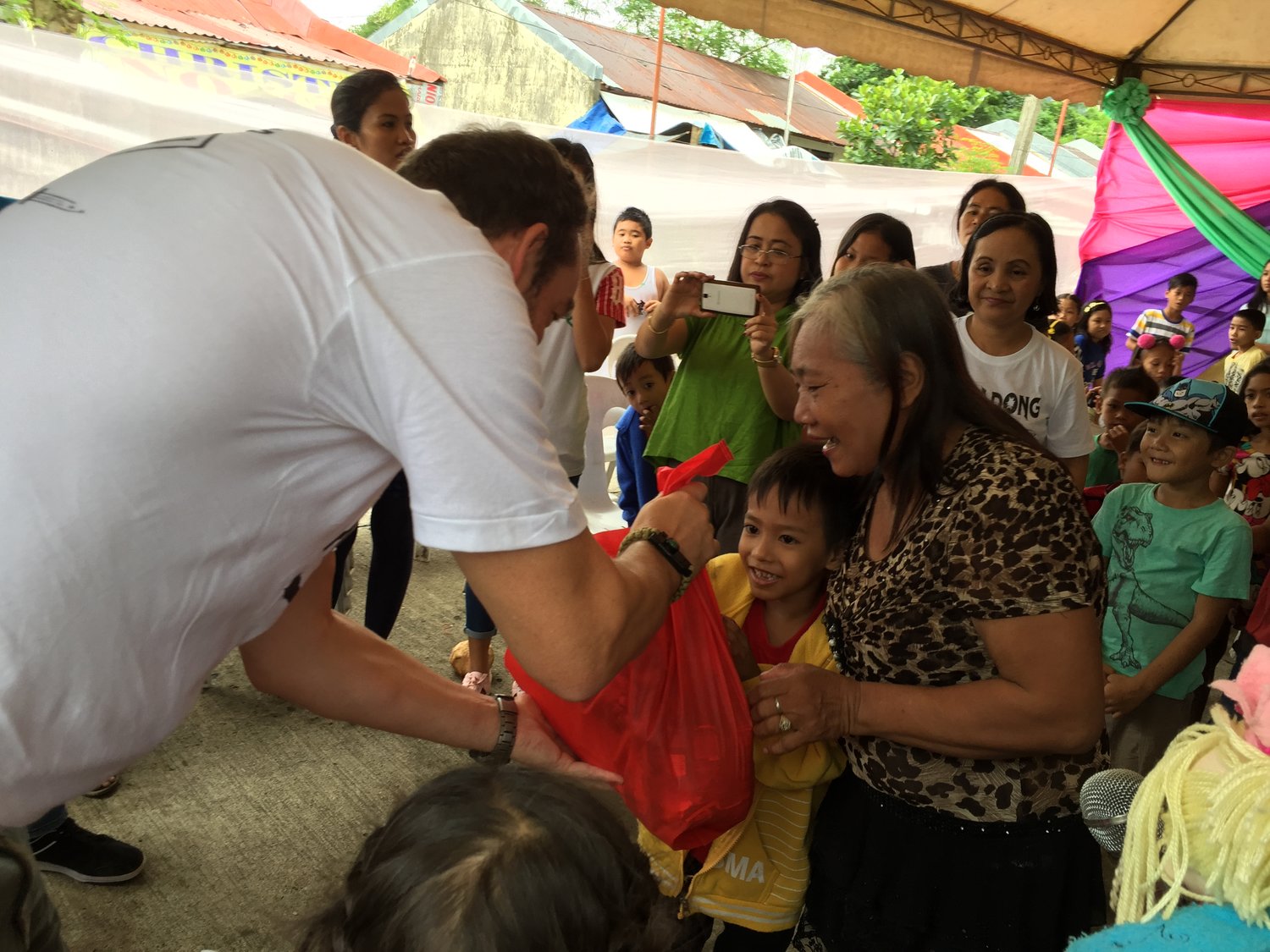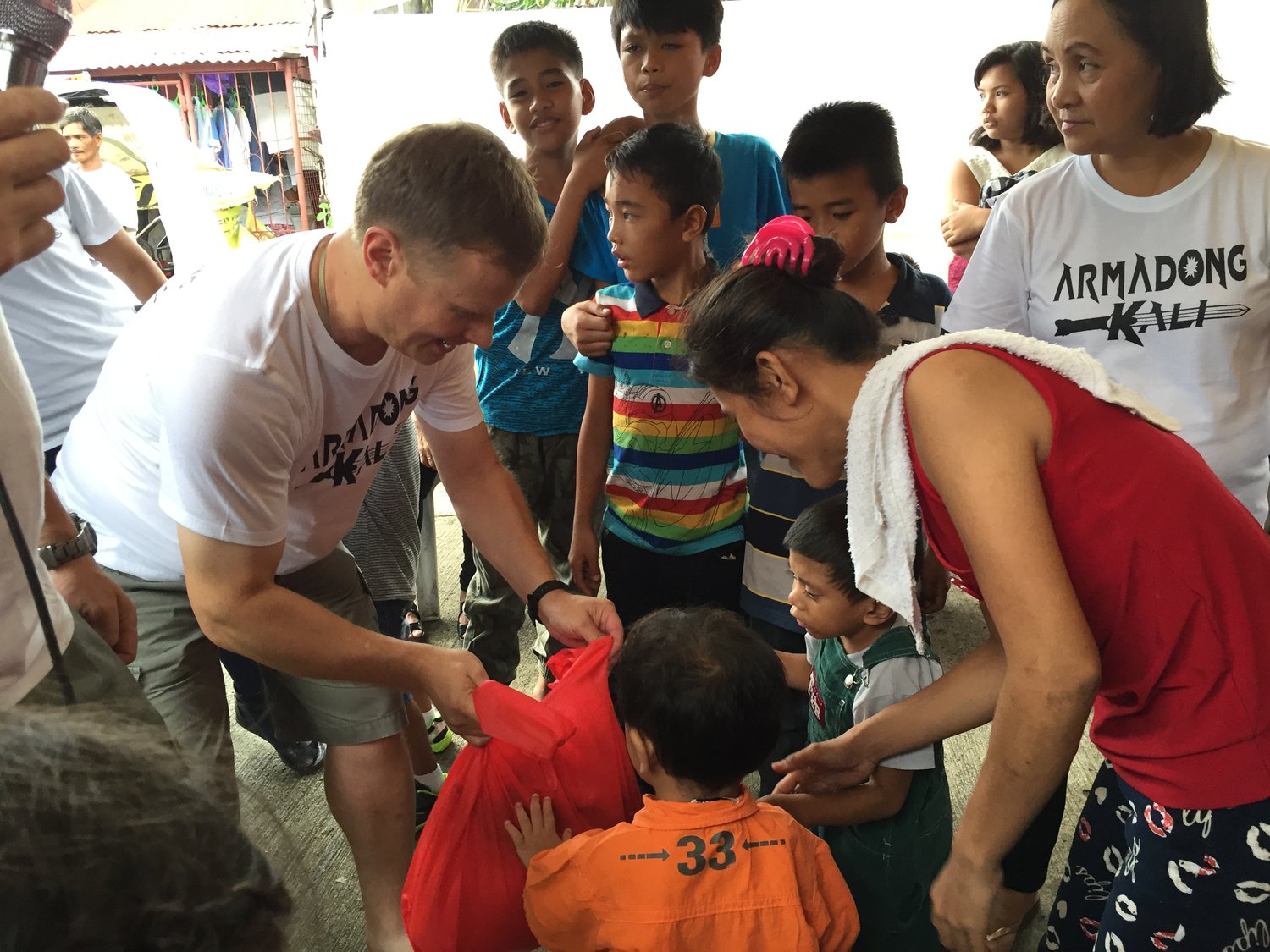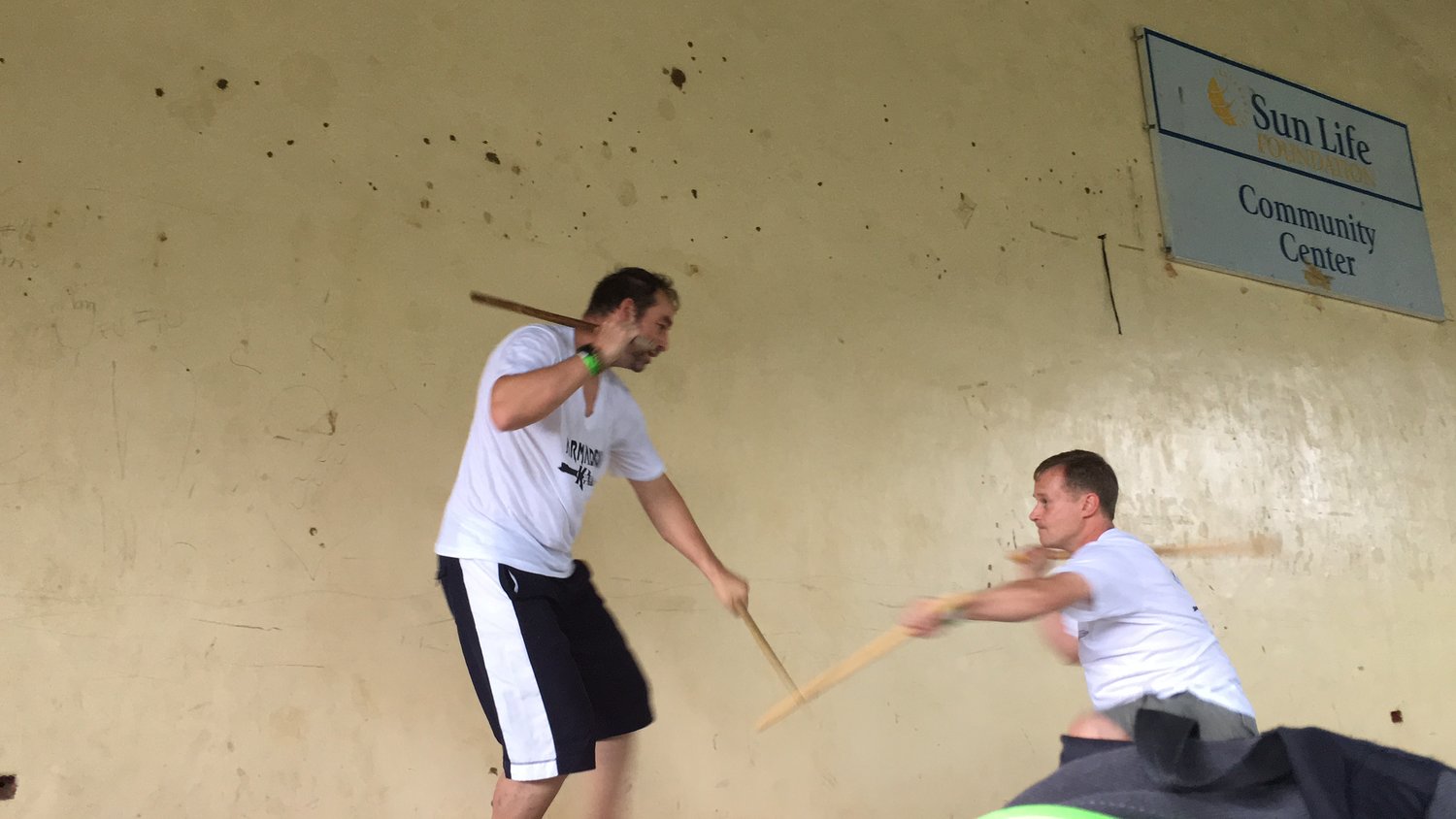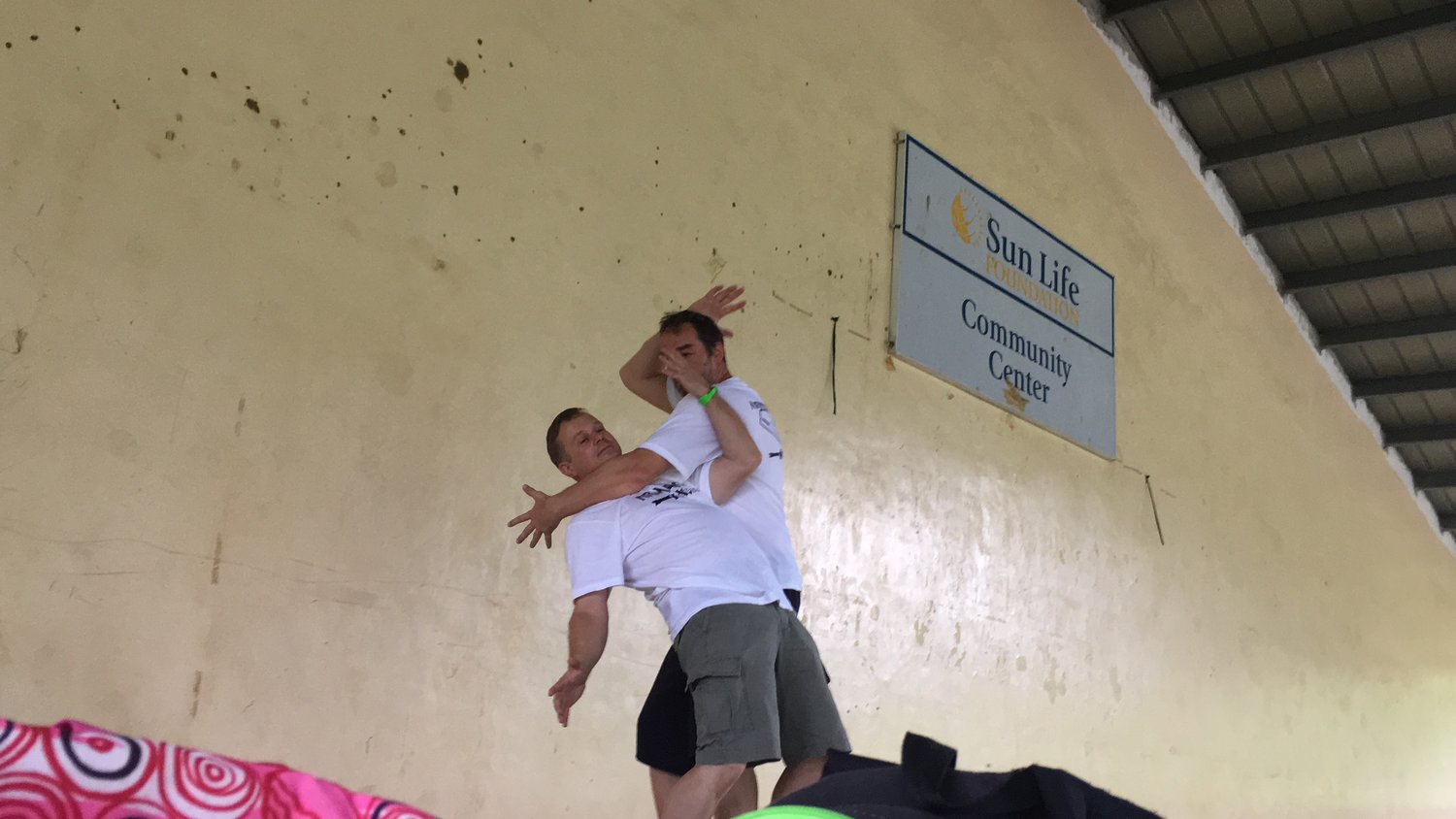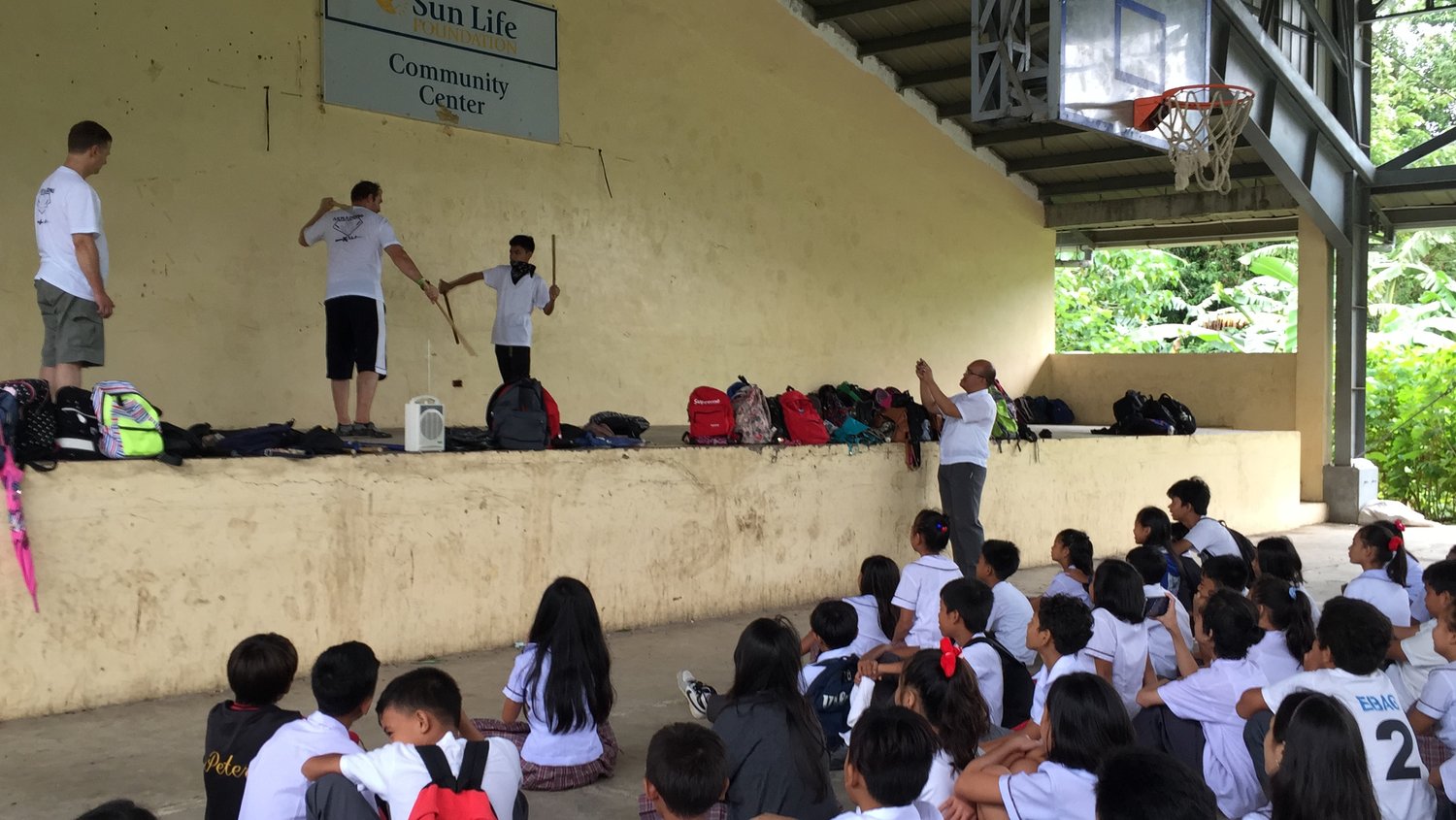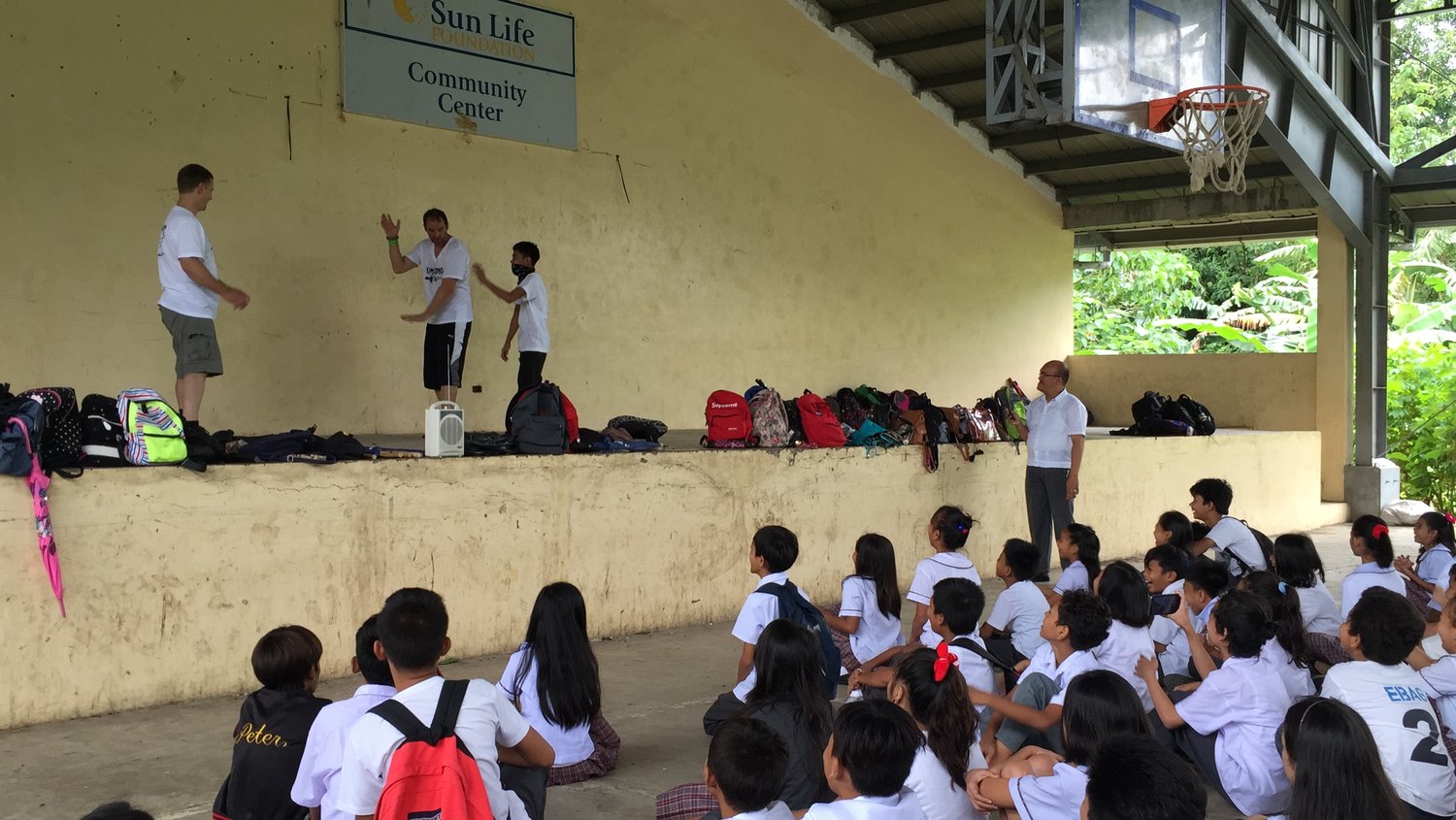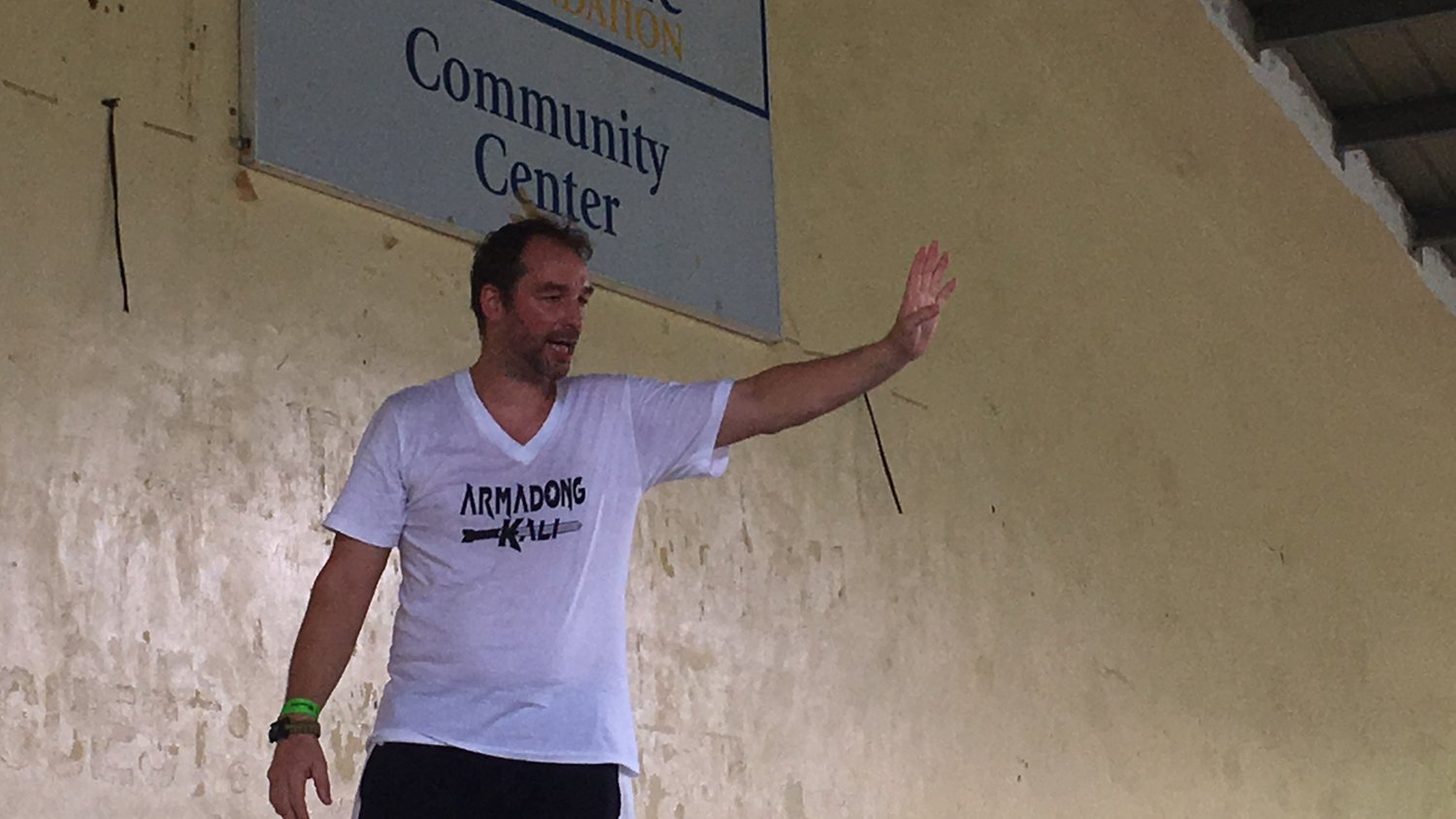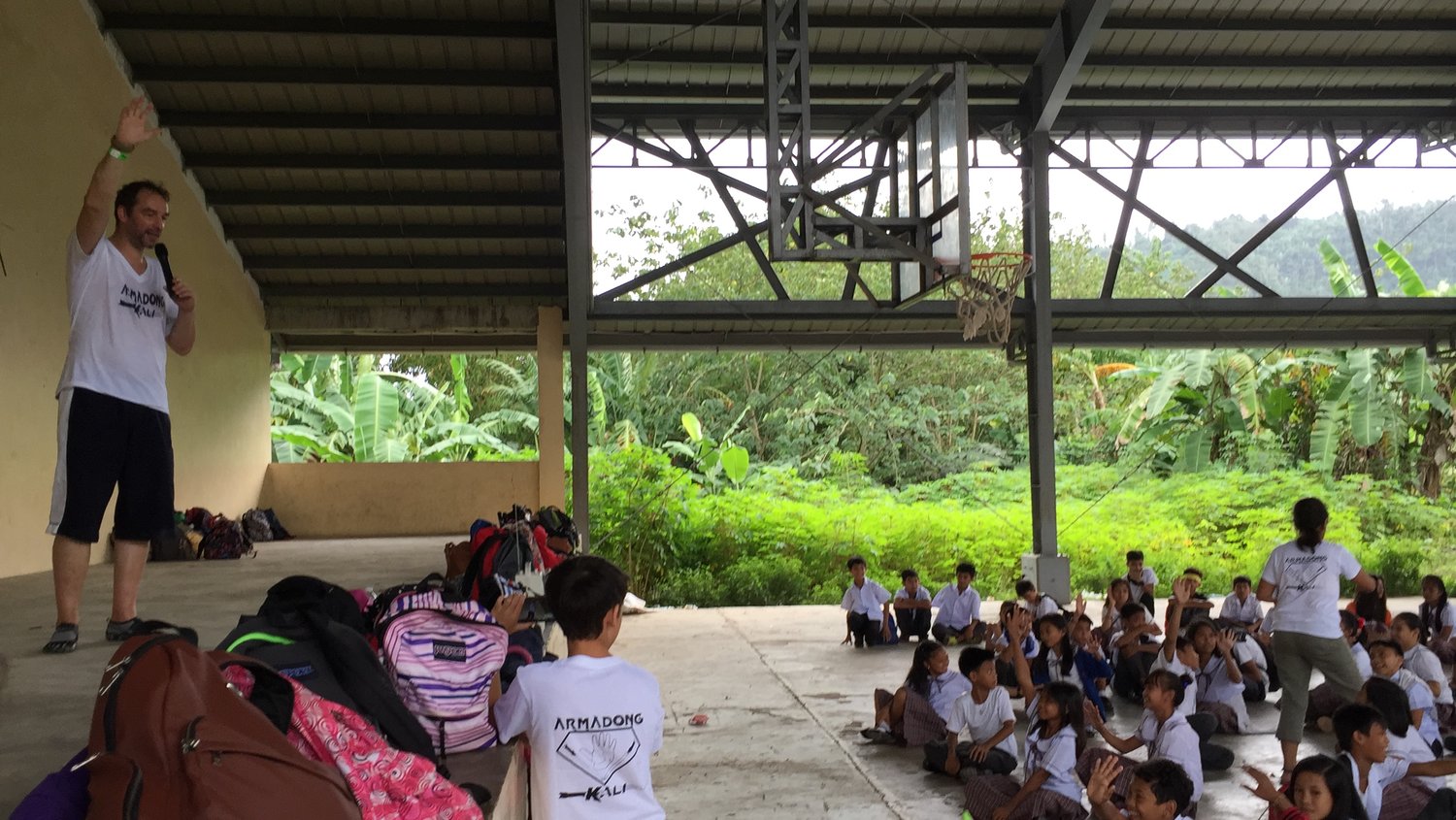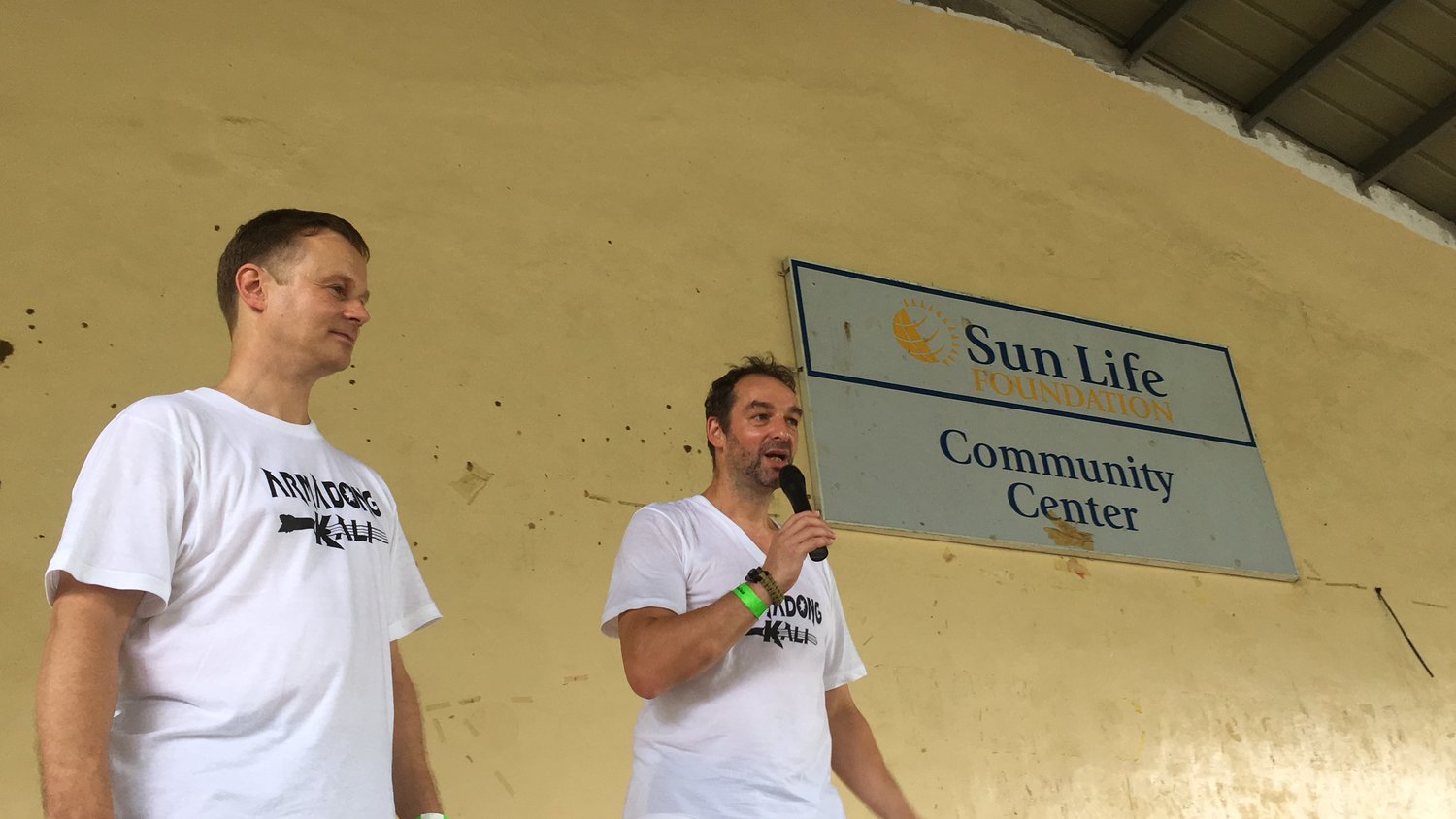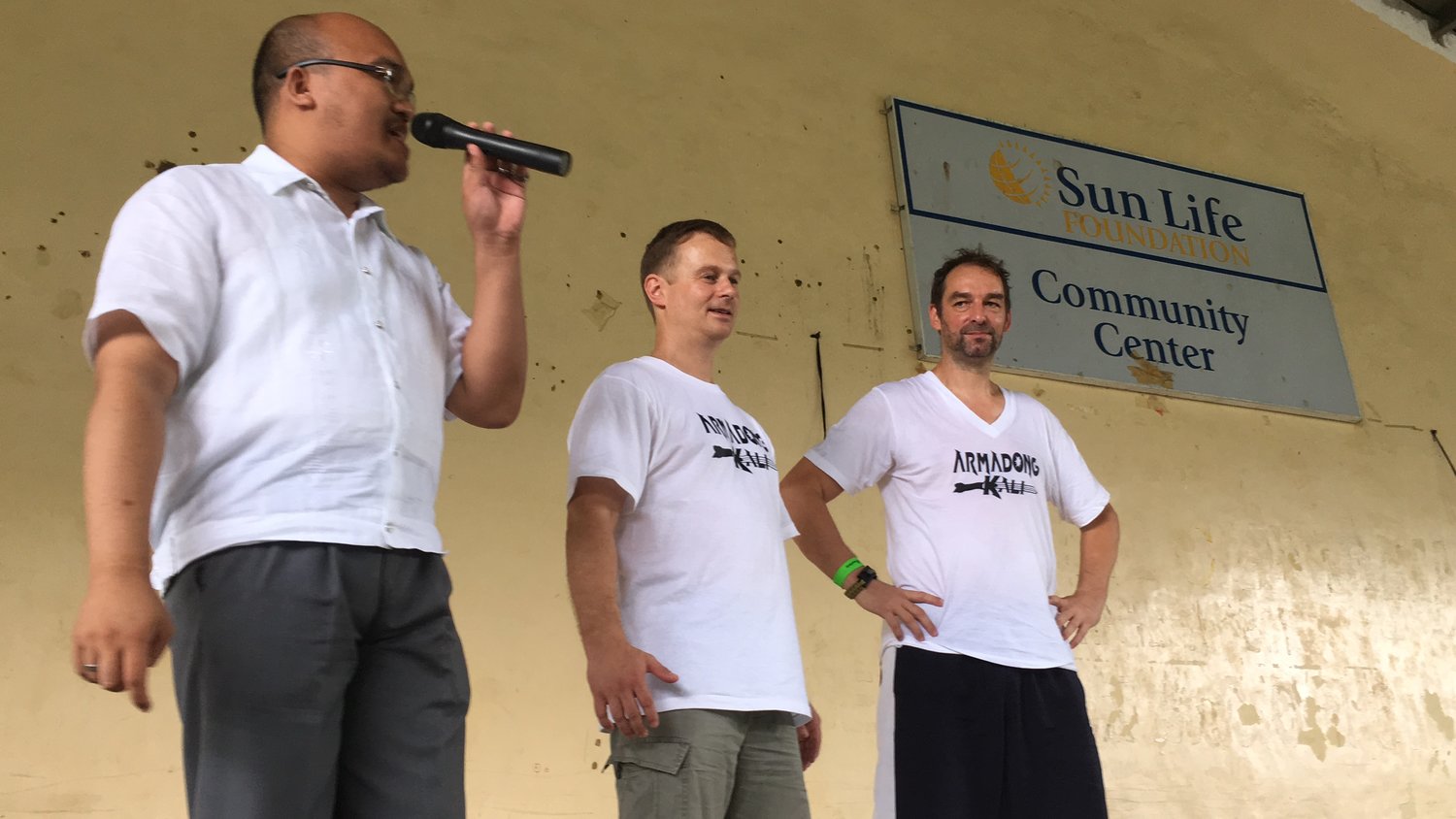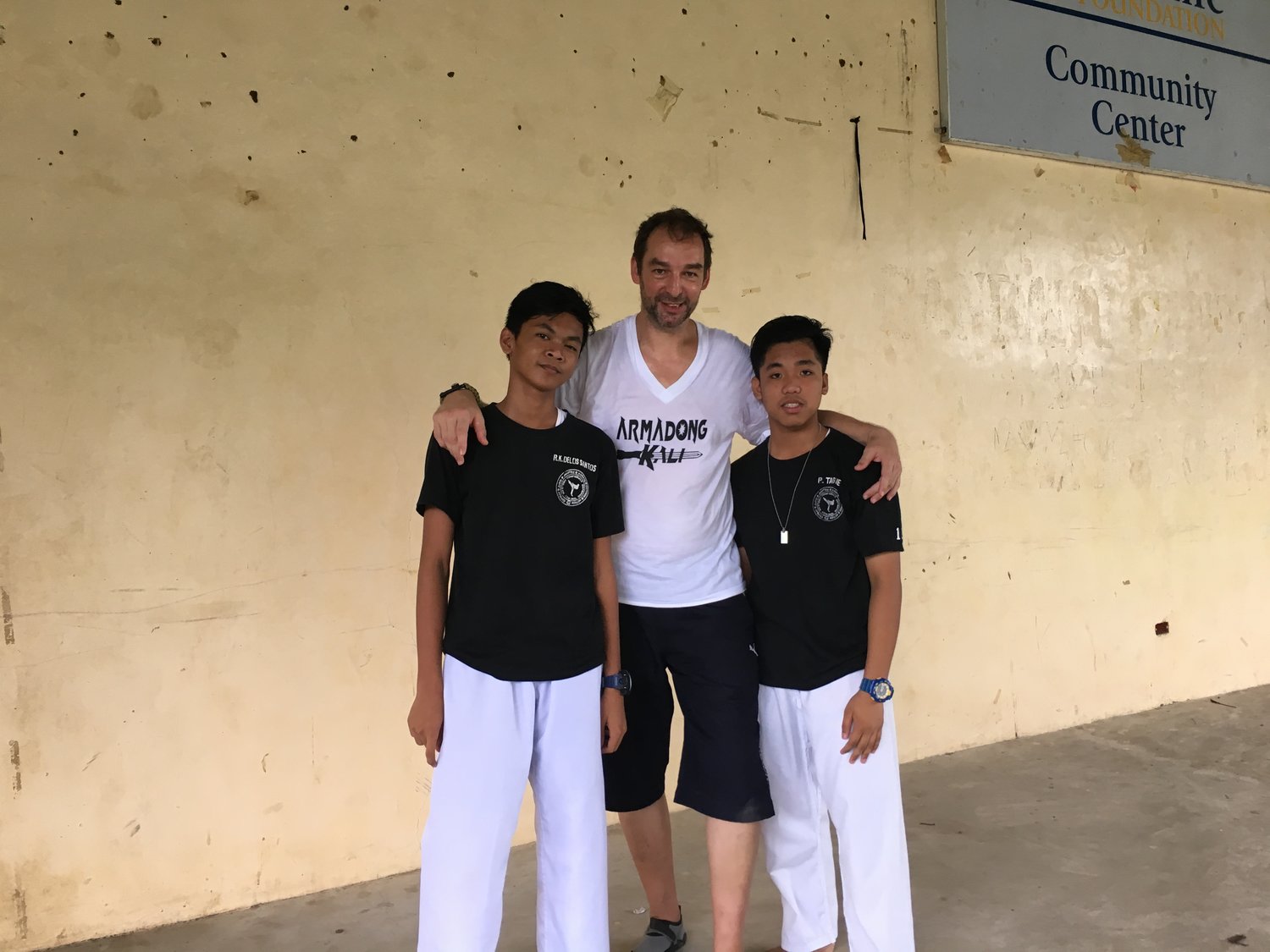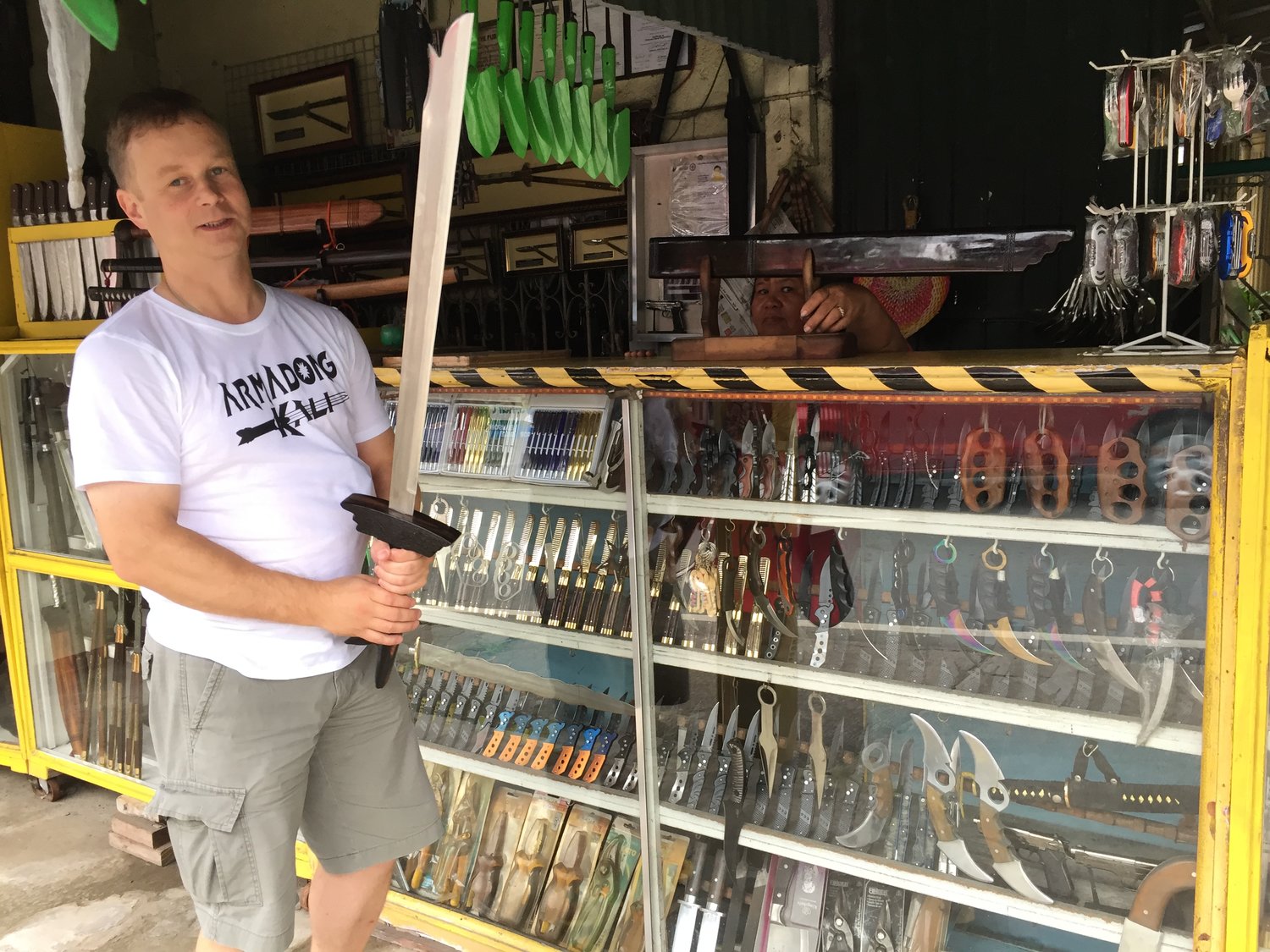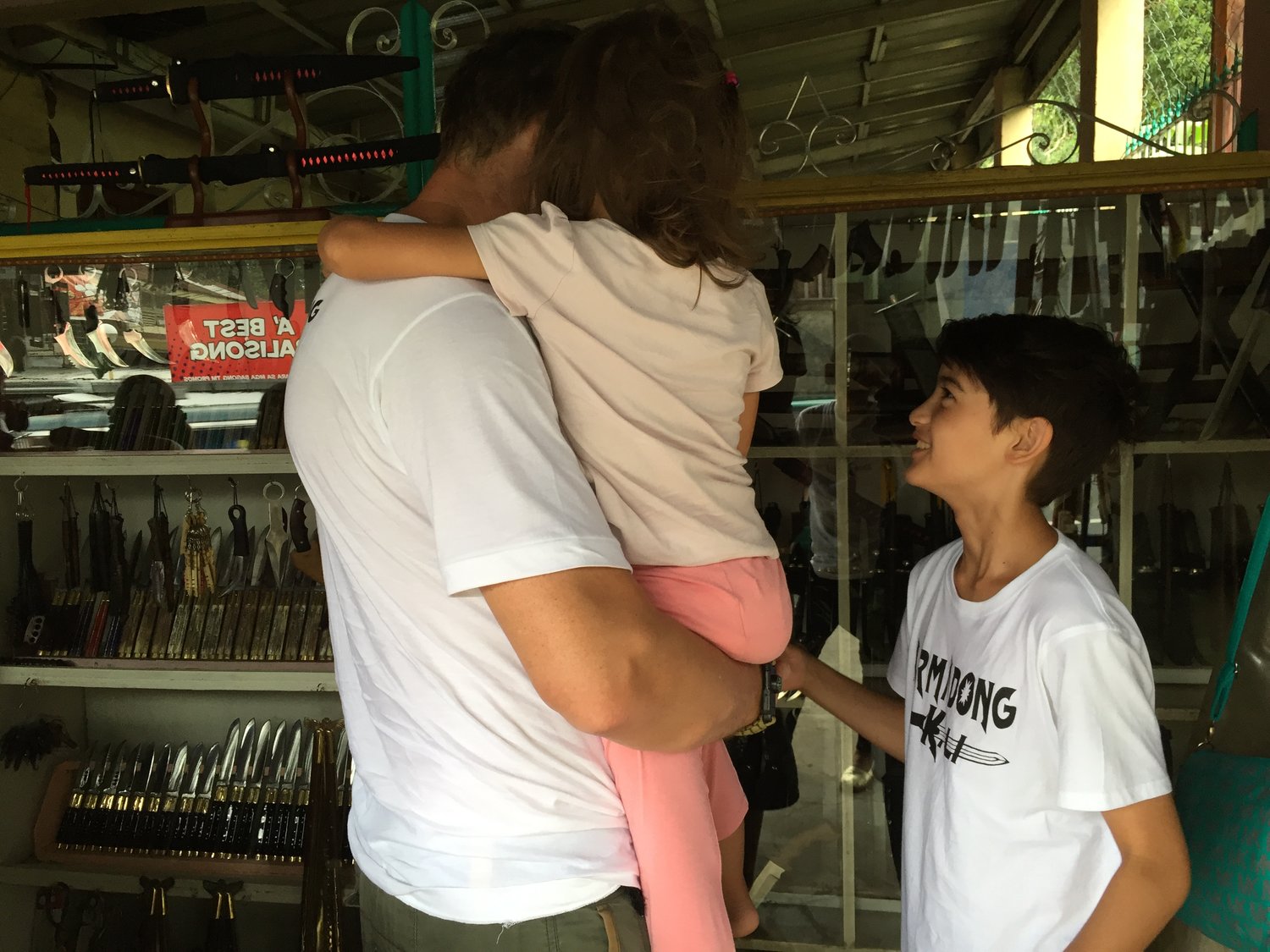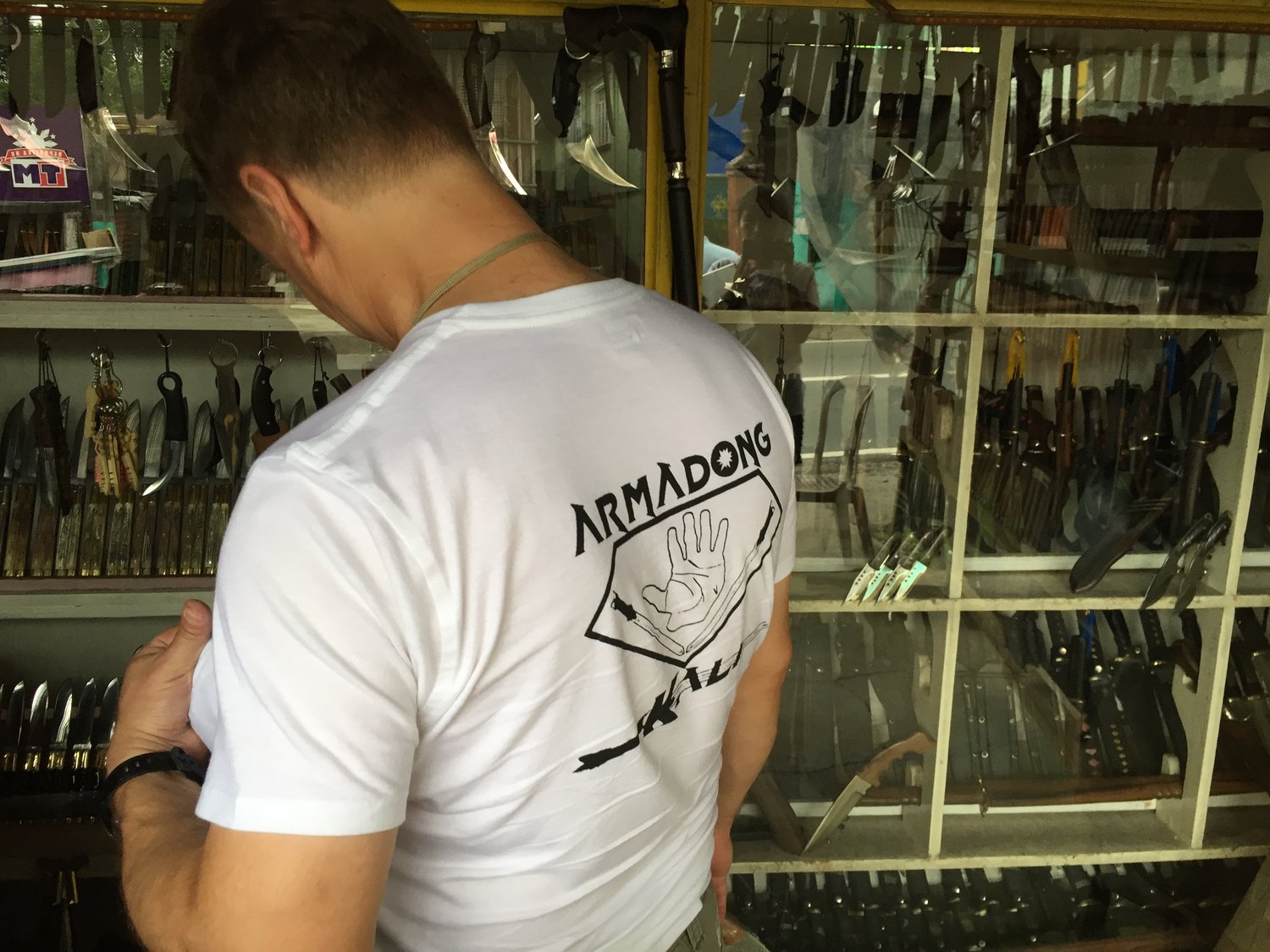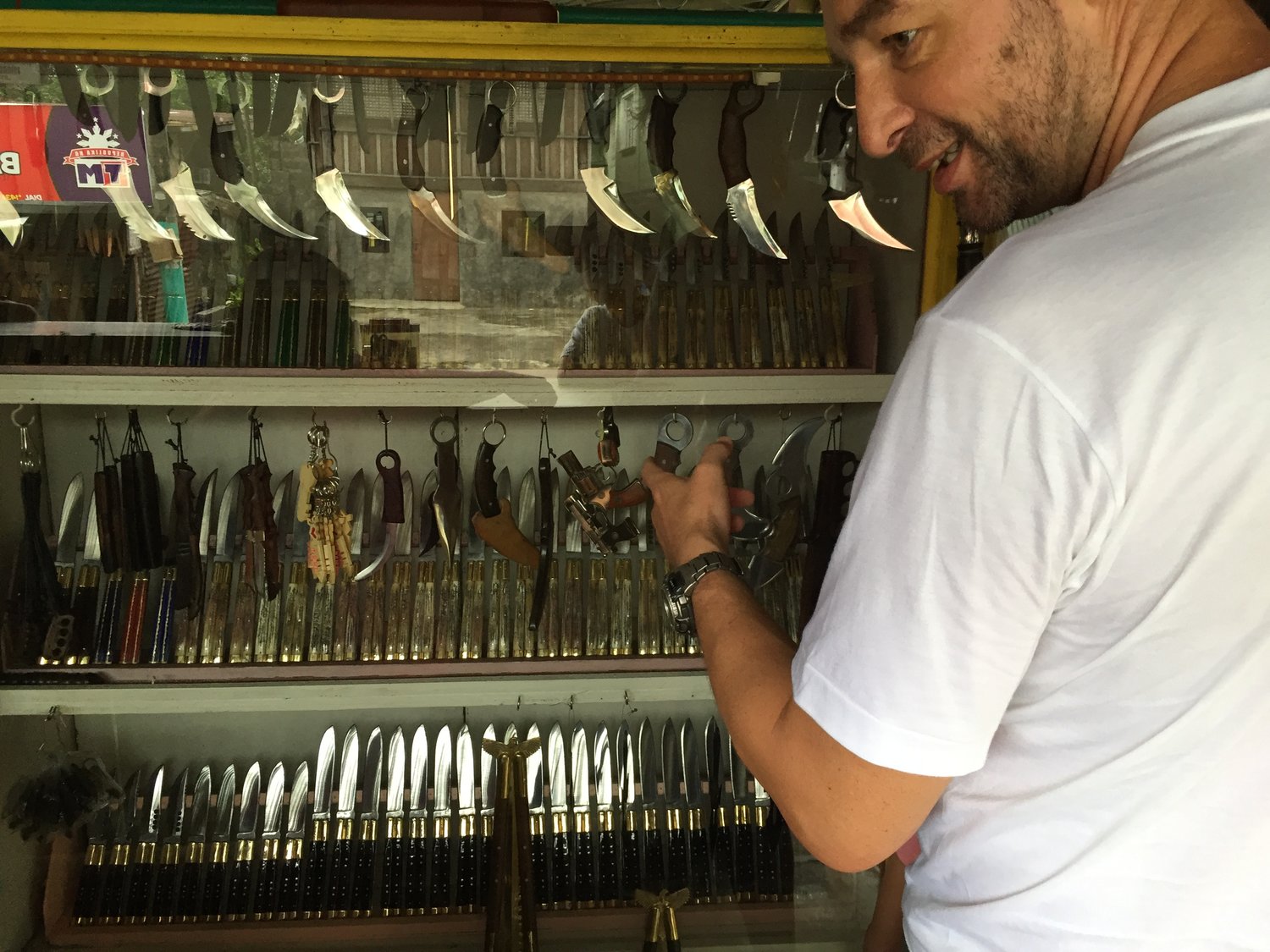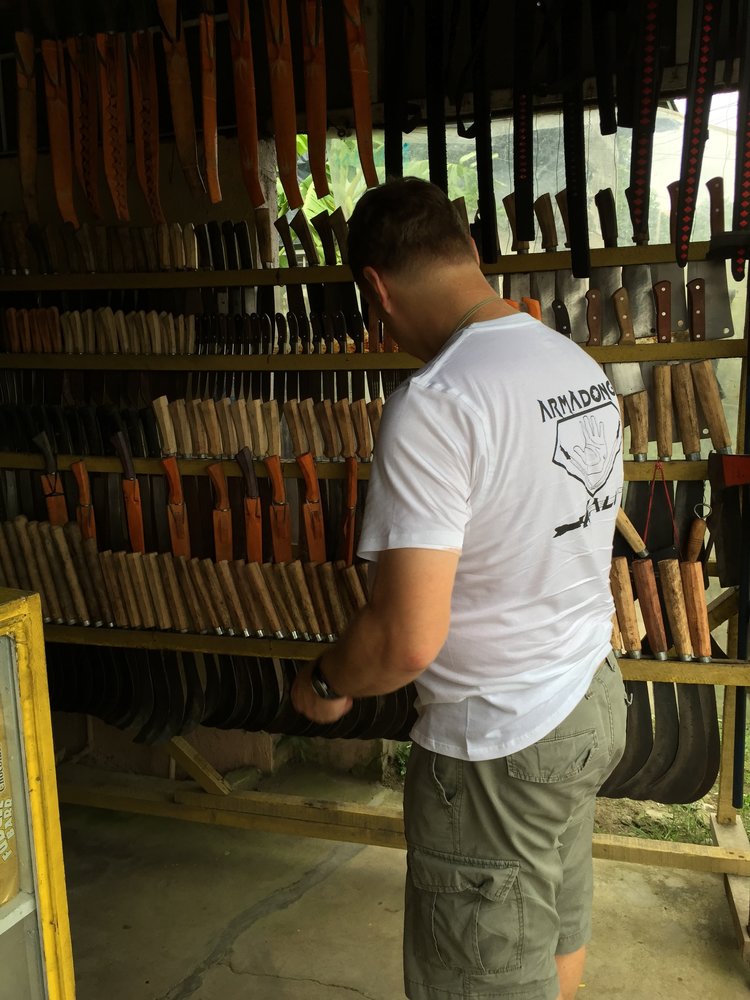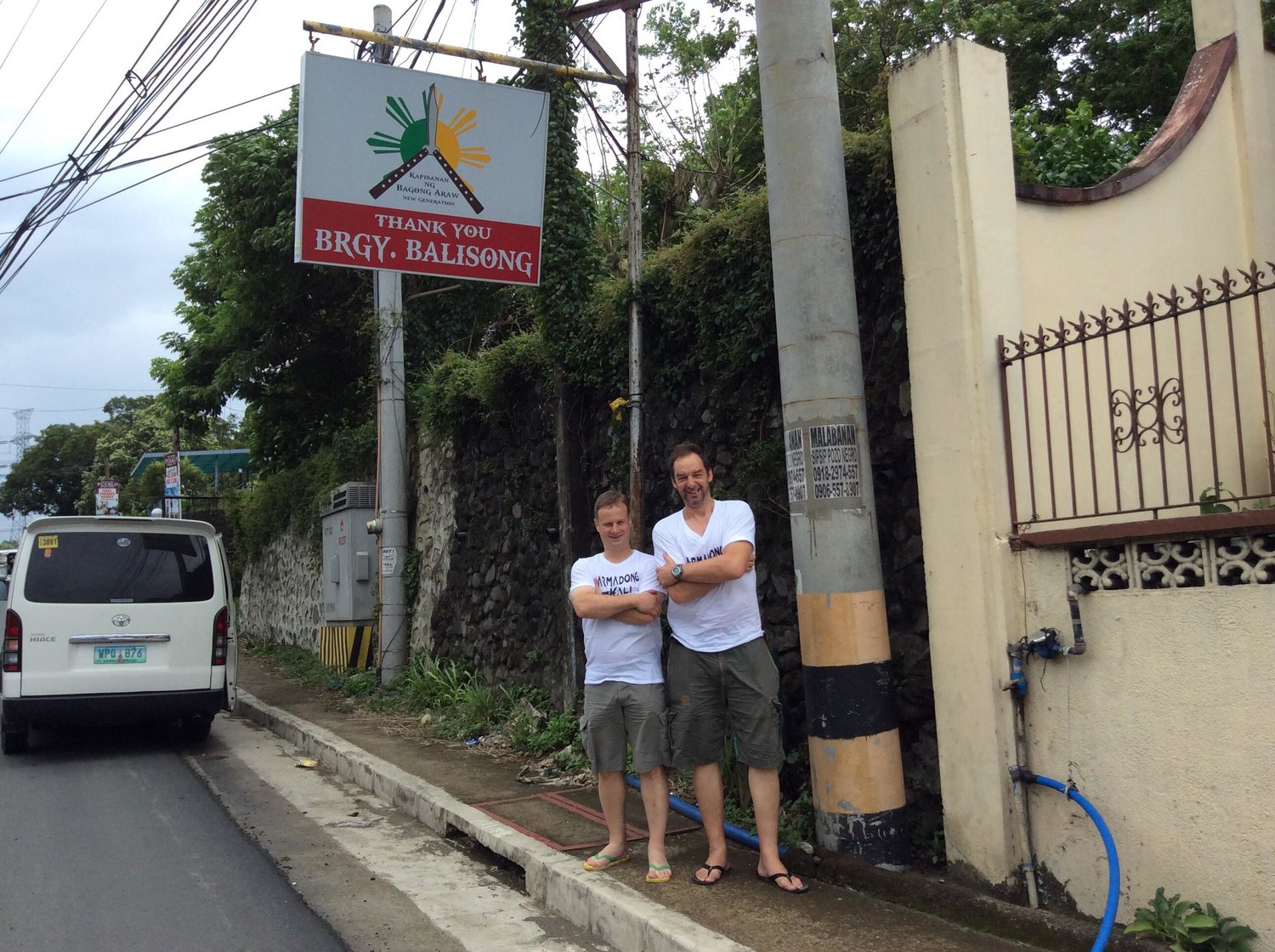The Power Break Blog
Five Minutes with Armadong Kali
Ideas = Inspirations = News = Thoughts
Five Minutes with Armadong Kali
Ideas = Inspirations = News = Thoughts
Philippines Travel Diary: Pekiti Tirsia Kali, De Campo Eskrima, World War Veteran, Juego Todo, Buy Bust, Mang Olavides, Mandala Thomas Müller…
by Tuhon Uli Weidle, October 2018
As practitioners of Armadong Kali, we are proud to share the positive aspects of Filipino martial arts and lifestyle with interested people. At the same time we also ensure that Filipinos in their homeland feel our recognition and benefit. Read this fascinating report on the new Kali movie Buy Bust, the Kali Training with Filipino Kali practitioners, a Juego Todo Tournament, the high school and kindergarten groups we support in the Philippines and more experiences from Tuhon Uli Weidle during his travels in the Philippines this year.
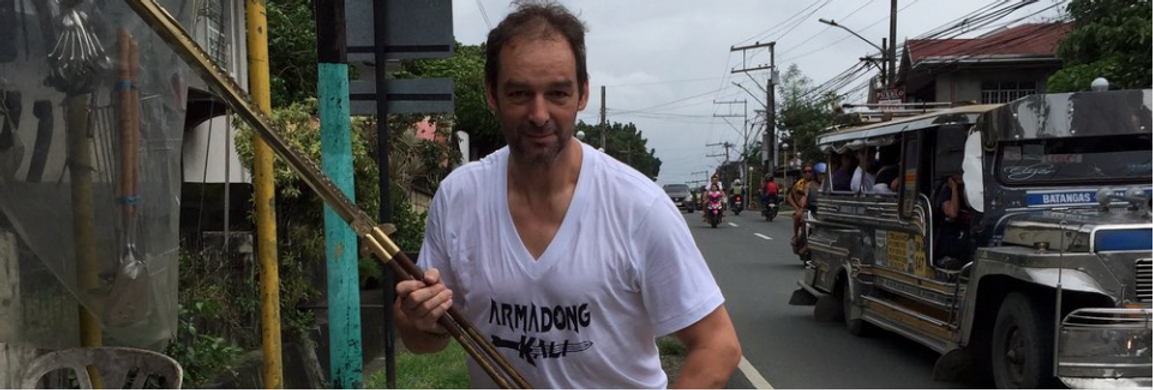
Travel Report Philippines 2018
From Tuhon Emeritus Uli Weidle
One thing we can all agree on is that change is the only constant in life. For twenty years, it had become the norm for me to fly to the Philippines twice a year to live there with my Kali mentor and his family. It was always a great two-month period of undisturbed focus on martial arts. Now I've got kids at school, so a trip to the Philippines is a special treat. That's why I was really happy that last summer I was heading to Manila once again. I was accompanied by my wife and kids, and we were looking forward to my friend Thomas Müller from Osnabrück joining us later.
Buy Bust - The "Pekiti Tirsia Kali" Movie
Word got around pretty quickly that I was back in the Philippines. I had a lot of friends and acquaintances from the martial arts scene asking me to meet up. The day after we arrived, my family and I were invited to the block premiere of the movie "Buybust". Almost all of the Pekiti Tirsia High Society from Manila was there, along with actors and filmmakers. My long time friends, Tuhon Mick and Tuhon Jay, had prepared the stars for their action scenes, and Tuhon Mick is seen in the movie in a supporting role. Before the movie started, there was a big 'hello' and of course many pictures were taken.
The film, starring Filipino movie celebrities Anne Curtis and Brandon Vera, looks at corruption and the relationship between the civilian population, drug barons, police, and politics as controversial issues surrounding the "war on drugs" which is currently being promoted in the Philippines. But first and foremost, the movie is an action movie with a simple storyline, lots of blood and plenty of Kali techniques. The film was described as a 'zombie movie without zombies'.
It's become pretty common to see Kali techniques in action scenes in well-known movies recently. However, it's not often that the origin of those techniques as FMA is highlighted. We're hoping that Buy Bust will give the Philippine film industry a boost, as well as finally giving Filipino martial arts the recognition it deserves in the film industry. The film has already been featured at film festivals in the US and Japan. There's even talk of it being released on Netflix soon. Only time will tell if the movie, with all its stars and Filipino martial arts, will attract interest outside the Filipino martial arts community and become the blockbuster we're all hoping for.
Kali Training: Jamming with Tuhon Jay
Naturally, the programme also included Kali training sessions. Every Wednesday, the Kali Katipunan Group (Pekiti Tirsia) of Tuhon Mick and Tuhon Jay gets together at the JCI Corporate Center in Cubao. The training ground is only about 25 km from my location in Manila, but the traffic in Manila is so bad that it takes nearly three hours to get there. Tuhon Jay met me halfway in the Powerplant Mall and drove me in his car to the training location in Cubao. Once there, I got to catch up with a lot of old friends and also meet a lot of new faces.
Before training, Likha Maharlika surprised me with a set of beautiful hand-made Maharlika training knives. The knives are marked with Baybayin characters for respect, care, inner self, hospitality, good sense, memory, gratitude & forgiveness.
I was asked to lead the training, which I did teaming up with Tuhon Jay. As expected, it was a harmonious Kali Jamming of two Tuhons with a lot of positive energy.
Visit From Germany: Thomas Müller
During the second week of my stay, Thomas Müller arrived from Germany. Thomas has been training Kali with me for over 20 years. He's a Maginoo Mandala in Pekiti Tirsia Kali and runs the Kali group in Osnabrück. Thomas was planning to spend a week with my family and me in the Philippines just before we left. In a chat before the trip, Thomas mentioned that although he'd been to lots of training camps on remote islands in the Philippines, he'd really like to experience normal training and family life in the Philippines. I offered him a place to stay and he didn't hesitate to arrange his trip.
Thomas had an adventurous trip and when I finally welcomed him at the international airport in Manila, he had lots of stories to tell. His commitment to training was clear when he, despite his tiring journey and jet lag, showed up the next day to join my early morning workout.
Warrior Princess, Spiderman, Weapons & Military Robots, Juego Todo Stick Combat And Three Days Knife Tournament: At the History Con
The scheduled afternoon workout with a Kali group in Manila was cancelled due to heavy rain. Following the advice of my Filipino friends, we went to the Manila World Trade Center's History Convention instead.
The History Convention is a film and entertainment fair, and there was plenty on offer. Thomas and I met Lapu Lapu, the Filipino national hero, and Urduha, the legendary warrior princess. Wonder Woman and Spiderman were also around for a chat. Thomas enjoyed getting a haircut in a classic Filipino barbershop. And there were loads of weapons: in a connected hall, all kinds of modern weapons – from small knives and hunting bows, to machine guns and remote-controlled IED clearing robots – were not only shown, but also available to be touched and sometimes even to try out. It was really exciting!
The best part of the H-Con for us was that it also included the classic Filipino martial arts. On top of the commercial stands where you could test and buy all kinds of protective gear, exercise equipment and bladed weapons, the H-Con also included a multi-day knife tournament, Juego Todo fights and Filipino show-wrestling.
Juego Todo - MMA with Sticks
One exciting part of the H-Con was a full fledged Juego Todo tournament. Modern Juego Todo is an attempt to find a media-effective form of competition for the Filipino martial arts, that will enable a tournament scene for professional athletes.
In the past, Juego Todo matches were duelling fights between two FMA practitioners with more or less clear rules to determine who was the better fighter. Sometimes these fights were called death matches. The modern Juego Todo battles are held in a cage. The fight is three rounds long and uses different types of weaponry. The first round is double stick, and the second is single stick. Kicks are allowed, and if you lose a stick, it's counted like a knockdown in boxing. The third round is fought with the weapons of the body and follows the rules of MMA. In the third round, competitors wear light MMA gloves, while in the first two rounds, they wear helmets and protective gloves. The modern Juego Todo uses padded sticks, which is a big change from the old-time Juego Todo matches, where rattan or even ironwood was the norm. The padded sticks and the protection worn in the tournament had a big impact on combat tactics and results, which was to the disadvantage of the weapons experts. There was a considerable prize money on offer for the winners. The fights were conducted with reasonable severity and fairness. The fighters deserve respect for their fighting spirit and performance.
Multi-Day Knives Tournament: Tuhon Mick as Referee
The H-Con also included a big knife tournament. The tournament went on for over three days. It was scored by three referees using electronic scoring. Padded knives were used and the fights were stopped for scoring after the first hit. The rules favoured daring attack tactics, with dives to the legs being a common move. Tuhon Mick from Pekiti Tirsia Kali Katipunan was one of the referees and the Pekiti Tirsia practitioners from Manila took part in the tournament with a demonstration.
The following week, Tuhon Mick celebrated his birthday. Mandala Thomas and I were invited to the party. It was a great privilege for us to be asked to conduct the Kali training that evening. After the training, there was a birthday party with lots of Filipino food.
The Outreach Programme
Part 1: Kali Nursery School in Calauan, Laguna
One of the highlights of our trip was a visit to a nursery school in Calauan, Laguna (about 100 km southwest of Manila), which we support with donations. Many of the families living there had lost everything due to the extremely destructive typhoon Yolanda/Haiyan in 2013 and were forced to move to Calauan. If the nursery school didn't exist, the parents of the children couldn't work, and the older siblings couldn't go to school. We help with paying a teacher, operating costs, and buying craft materials and toys for the kids. The nursery school helps the families rebuild their lives. Thomas decided to travel to the Philippines again because of our work with the nursery school.
Part 2: Arnis Group of St. Thomas Integrated High School
When the sports teachers and the school management at the Integrated High School in Sto Tomas heard that Kali experts from Europe would be nearby, we were invited to train the sports group and the sports teachers at the school.
Since 2009, Arnis (Kali, Eskrima) has been the national sport and martial art of the Philippines. It should be taught in all high schools, but unfortunately, the physical education teachers in the schools are often poorly qualified. Even training sticks are lacking.
We were happy to accept the invitation from the high school. The students and teachers were really interested in the training and took part with lots of enthusiasm. The school management was also very enthusiastic and asked us to come back and run the training again.
Next time, we'll make sure we have enough sticks for everyone. There was also a lot of interest in the Armadong Kali shirts.
Part 3: Meeting With Arnis War Veteran
From the start of our Kali training for the Sto Tomas IHS, it was clearly visible that a few young people had already reached a high level of expertise in martial arts. It later emerged that these were students of Arnis veteran Amado. Manong Amado was kind enough to come to the event and watch us in action. He was a bit suspicious at first but soon became more supportive. He told us later on that he was a black belt in martial arts back in the 1960s. He also told us what Arnis means to him and shared some examples of when he had to prove his abilities in battles. He teaches his students a mix of Arnis, Combat Judo (which he calls the unarmed Arnis Defence), Taekwondo, and other martial arts. As his students were more advanced than the other participants in higher education programmes, Thomas and I split up the practical training: Thomas taught the teachers and students of the college while I took care of the advanced students.
Barangay Balisong
On our trip to Laguna, we took the opportunity to make a detour to the Batangas region and visit Barangay Balisong. This village is known for being the place where the legendary Philippine butterfly knives (also known as balisong knives) originated. Even today, there are still a few blacksmiths with street shops in the Barangay, where you can see and buy all kinds of utility blades and, of course, the legendary butterfly knives. If you're interested in FMA and Filipino blades, it's definitely worth a visit!
Manong Olavides
One of Thomas's top wishes was to meet Manong Olavides. Manong Olavides is one of the few master students of Jose D. Caballero, the grandmaster of the Uno Dos Tres De Campo system, who is well known for his documented duel fights.
Manong Olavides isn't one for publicity and is pretty selective about who he teaches. I've known Manong Olavides for 14 years, but it was tricky to get an appointment for Thomas and me. When we finally got to Manong Olavides' place, we were made to feel really welcome and got some great insights into the mindset and life of a master of Filipino martial arts. It was both enlightening and inspiring! I was really touched by Manong Olavides' description of Grand Master Jose D Caballero as an understanding, paternal teacher. He was so close to his students that he always knew when they had trained between sessions and when they hadn't.
Conclusion
There were plenty of chances to catch up with old and new contacts and gain new insights into Filipino martial arts, as well as the Filipino culture and way of life in general. In our martial arts association, we spread the word about the great things about Filipino martial arts and lifestyles to people in the west who are interested, and we also make sure that Filipinos in the Philippines know we appreciate them and benefit from it. What I found particularly interesting on this trip were the stories my wife's grandmother told us. She told us about her father, who made it through the infamous death march in World War II and later became a Chief Investigator of the Philippine Police. She told us about her grandfather, who ran an Arnis and Combat Judo school, and how she used to help him out there. She also said that her father was respected for his skills. My wife's father was also a respected Arnisador and Karate master. I've decided to study the history of my Philippine family more closely. Overall, we had a great time in the Philippines and we're looking forward to our next trip to the home of Filipino martial arts.
This article is based on Tuhon Ulis' travel diary from July to September 2018.

